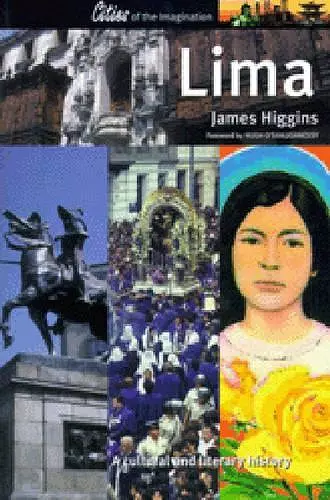Lima
A Cultural and Literary History
Format:Paperback
Publisher:Signal Books Ltd
Published:24th Nov '04
Currently unavailable, our supplier has not provided us a restock date

Formerly the viceregal capital of Spain's vast South American empire, Lima is today a sprawling metropolis struggling to cope with a population of eight million. Located on the coast between the Andean foothills and the Pacific Ocean, it is many cities in one, with an indigenous past, an old colonial heart, the port of Callao, and turn-of-the-century quarters modelled on Paris. Leafy suburbs like San Isidro and tranquil seaside communities such as Barranco contrast with ever-expanding shantytowns. Lima has always dominated national life, as the centre of political and economic power. Long a stronghold of the European elite, the city is now home to millions of Peruvians from the Andean region as well as the descendants of African slaves and migrants from Europe, China and Japan. As a popular saying puts it, the whole of Peru is now in Lima. James Higgins explores the city's history and evolving identity as reflected in its architecture, literature, painting and music. Tracing its trajectory from colonial enclave to modern metropolis, he reveals how the capital now embodies the diversity and dynamism of Peru itself. CITY OF HISTORY: ceremonial sites and museums of pre-Hispanic antiquities; colonial churches and mansions; the Museum of the Inquisition; monuments to the heroes of Independence. CITY OF CULTURE: pre-Columbian textiles, pottery and goldwork; Baroque architecture and art; writers such as Mario Vargas Llosa and Alfredo Bryce Echenique; painters and sculptors; a vibrant popular culture. CITY OF MULTICULTURAL EXCHANGE: the indigenous legacy; the imposition of Spanish culture; African slaves; European and Asian immigrants; mass migration from the provinces.
A tour de force in more senses than one, James Higgins's new book offers a wonderful, synchronic as well as diachronic journey around Lima. Part I, 'The Strangest, Saddest City' (the description is borrowed from the narrator of Melville's 'Moby Dick'), introduces us to the setting, climate, and history of Lima, its painful independence, and equally painful emergence into the modern era. Part II offers a nicely balanced history of the pre-Hispanic cultures, including the Nazca, Moche, and Chimu. Part III, 'City of the Kings', takes its point of departure from the founding of the city by Pizarro on 18 January 1535, and offers some carefully choreographed insights into the culture which flowed from that event, including the early planning of the centre as a grid of streets ('Pizarro's draughtboard'), the pageantry of the festivals in colonial times, the role of the merchants and 'encomenderos', the churches, the elite and the subalterns (such as the Afro-Peruvians). Most interesting of all, Higgins points to the gradual emergence of a 'criollo' consciousness which coalesced around subaltern groups as well as local saints such as Santa Rosa de Lima. Part IV focuses on the ramifications of the Independence movement, San Martin's liberation, the War of the Pacific, the Guano boom, the arrival of the immigrants from China, Japan, Britain, and Italy, the growth of a 'criollo' musical tradition, as well as a number of sections on important state institutions such as the National Library. The past is brought alive by Higgins's astute references to everyday life during the period; typical is the ditty which circulated in London in the 1840s making fun of how the British company Anthony Gibbs and Sons made their money during the Guano Boom: 'The House of Gibbs made their dibs / selling the turds of foreign birds' (p. 113). Part V homes in on the expanding metropolis, and in particular the migration of the inhabitants of the Andes down to the capital in the 1960s and 1970s, and shows how this affected the city region by region. There are some fascinating sections on the growth of the folk saint, Sarita Colonia, as an icon for the shanty-dwellers, Limenan cuisine (which made me feel hungry!), and the growth of different styles of contemporary 'alternative' music (huayno, chicha, tecnocumbia, chicha lite), concluding with some words from that master of Peruvian humour, Bryce Echenique, who once complained about how everything had changed in Lima: 'Everything is chicha, our souls are chicha, being eccentric is chicha, corruption is chicha, moral degradation is chicha, and of course the sociologists who invented the word chicha are chicha' (p. 227). What is so impressive about this book is the way it allows the history to emerge so effortlessly while we take the tour. An entertaining, erudite tour of the historical complexities as well as the nooks and crannies of that wonderful city -- peppered with striking quotes which make the past come alive -- this book is a must-read. Stephen M. Hart, University College London.
ISBN: 9781902669984
Dimensions: unknown
Weight: 380g
256 pages